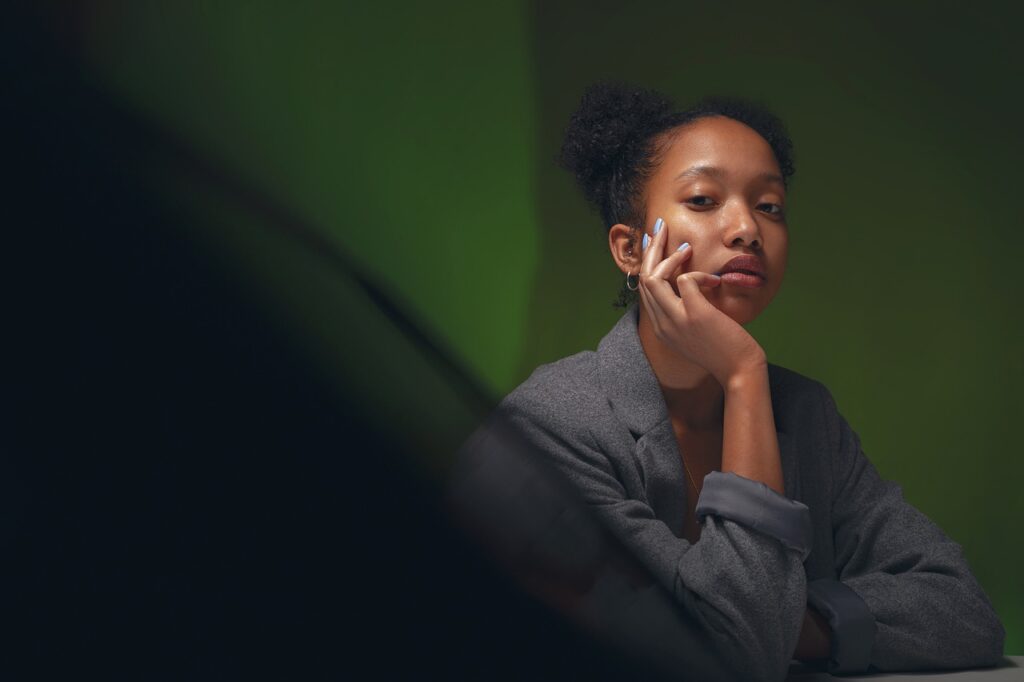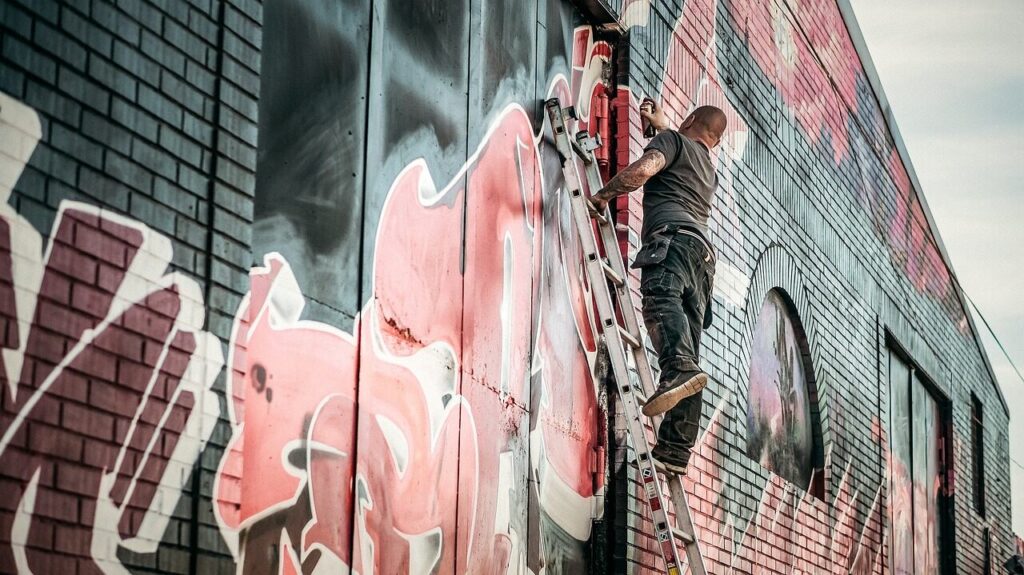Ultimate Guide to Web Design for Artists
Web design for artists has rapidly become an essential skill as well as an added advantage out there in the competitive online world. Imagine seeing the mesmerising strokes of a Van Goch ready to buy online, I mean, come on!
Ok, a little too much? But I make this point to highlight how important the online space is now for artists. It’s your virtual gallery and portfolio that showcases your creativity and the uniqueness that is your art. It serves as a place to make an impact not just in your immediate locality but also potentially globally. So mastering web design can potentially empower you to build the best website for your collections, turning your art into an accessible experience.
As a web designer for artists and creatives, I can honestly say that with the right web design and search engine optimisation techniques, the reach for your artwork can grow. So if you are ready, let’s dive into your ultimate guide to designing a website as an artist.
Introduction to Web Design for Artists
I am truly passionate about art web design. As an experienced web designer and art lover, I want to make your work shine. The realm of web design for artists presents this unique and exciting intersection of creativity and technology.
When designed correctly a website can be powerful and impactive, elevating your portfolio to new heights. This means captivating new audiences that may never have been exposed to your art before.
But there are some caveats to this. It needs to be strategic in its design (more on this later), professional, authentic and creative all at once. That’s a tough task to undertake and I hope this guide will steer you in the right direction.

Understanding Your Personal Branding As An Artist
Defining your artistic brand is essential to conveying what you and your creative vision are all about. Numerous artists, from emerging talents to established icons, have used web design to make a distinctive online presence that resonates with their unique brand identity, capturing that audience interest and retaining it through consistency on different platforms.
So, it’s not just about your art itself; it’s also about your brand’s personality, which a web designer, such as myself, can help you articulate through your online presence.
All aspects from your distinct style, colour schemes, and narrative behind your work all contribute to your ‘brand’ or general vibe. This is so important when trying to put this across on your website and shouldn’t be underestimated.
It takes reflection on what makes your art uniquely yours, whether it’s the medium you use, the messages you convey, or the emotions you evoke. By incorporating these elements into your web design, your site will truly become an extension of your voice. You want those emotions and connections to your audience to come across immediately and leave that lasting impact.
Essential Features of an Artist’s Website
So what is important on the website of an artist? Firstly I would say your gallery is what potential clients will be searching for. What is important here is high-quality images that are zoomable and immersive for your customers. This, after all, is what they want to see and feel without actual in-person visits.
One sometimes overlooked element is videos. These are easily uploaded, interactive and multi-dimensional. Potentially, they can further enrich this online display of your work, allowing your art to leave a lasting impression through a more personal connection.
In addition, easy navigation is paramount. Everything should be made super simple and easy for your website visitors. Why? People’s attention spans when online can be a lot shorter, nobody wants to jump through lots of hoops to find something relatively easy. Visitors to your artist website should be able to easily access your portfolio, about me page, biography and contact page.
By using a professionally designed website platform or designer your website can enhance client engagement, ensure that all your art is explored fully and convey all you want to put across online.
Portfolio Presentation
One of the main focal points of your website is going to be your artist portfolio page. The way I go about this first is to plan the structure, ensuring it’s easy for people to find the genre or category of work they are interested in. I use pieces that make the biggest impact upfront to capture the customers’ attention from the get-go. The structure needs to be logical in order to guide people through your personal artwork journey.
It’s also important to remember here to keep it up to date. This would encourage people to revisit your website when new artwork appears or to see if something that truly resonates with them.
As well as the high-quality images, a detailed description of your art is great for providing insight into each piece of your work. This approach not only showcases the depth of your work but also enhances the viewer’s appreciation and understanding of your artistic vision.
Another consideration is whether you would need an e-commerce function or the ability for your clients to buy the art in just one click. There are pros and cons to this which are dependent on your art, your approach, and the time you have to update and maintain your website.

Artist Bio or About Me Page
Your artist bio or about me page is where you connect with your audience. A great bio page is achieved when the following is added in your own unique voice:
Compelling Introduction: Something that captures attention right away
Your Story: Share your background, how you got started, and the challenges you’ve overcome. This is where you can put some of your personality into your narrative, making your journey relatable and engaging to your readers.
Highlight Your Expertise: This helps establish your credibility by highlighting achievements you have earned so far on your journey. It doesn’t necessarily have to be ‘showy’, if this isnt your thing. Just think of it from your potential clients’ point of view, it is great to see.
Your ethos or mission: The values that guide your work. This helps visitors connect with you on a personal level and understand what you stand for.
Call to Action: This is to encourage visitors to contact you, follow you on social media, or explore more of your content. Make it easy for them to take the next step and keep them interested
Artist Bio Page Example
A great example of a bio page or about me page for an artist is by Alonsa Guevara. Alonsa is a Chilean artist now based in Brooklyn, whose work is deeply influenced by her upbringing in a tropical rainforest.
From this example, you can see how her bio weaves her personal history, the natural inspiration behind her art, and her journey through various exhibitions and accolades.
Straightaway you are captivated by her unique artistic perspective and the emotions that drive her creations. There is an insight into her early life and her natural environment that shaped her colourful paintings and what they explore.
She makes great use of her professional highlights and journey, including her exhibitions in galleries and features in well-known publications.
This stands out for me as she has also added an interactive video. Straightaway you connect with her as a person, as well as an incredibly talented artist. You get a real insight into her motivations and experiences that have influenced her work. The web designer in me would say she does need a final call to action. Don’t miss out on these little opportunities. They can still be there subtly, but are very beneficial.
Contact Information
Your contact information should be real easy to find on your website. If your potential clients are spending time searching for it then that could affect their experience buying from you, which could be seen as a reflection of not just your website but your business too.
I tend to place contact information at the bottom of every page of a website, as well as a specific contact page containing a contact form. Ensure links are clickable, again making it easy for people to use. Ensure all contact information is accurate and up to date. If you are also advertising on a Google Business Page then it’s essential all contact information is identical.

Choosing the Right Website Builder
This is a whole blog post in itself and one that will be ‘coming soon!’ but to give you a general insight. There are so many different platforms out there you could use as an artist, it’s hard to know where to start.
It can be pivotal for your art sales to choose the right website builder as an artist. It needs to align with your artistic vision and have all the functionality it needs. You could look for builders that offer customisable templates, design flexibility, and e-commerce capabilities, which are important for artists looking to sell their work.
But what I will say is that some templates do have their limitations and it takes a lot of time to build a website. So if truly want to stand out and share your unique style, then professional web design may be the way to go.
SEO or search engine optimisation is also crucial to help you stand out and show up in online searches. I won’t build a website for a client that isn’t search engine optimised to give your art the best chance of showing up in the Google search results. I also use a platform that was made specifically for creatives and is super easy to update.
Best Colour Schemes for Art Websites
When designing a website for artists, selecting the appropriate colour scheme is paramount. To be frank here, you are the expert when it comes to colour schemes and how they reflect your vision for the website project. But there are a few important considerations.
Think about neutral tones with bold accents to allow your artwork to be the focal point. This balance ensures that the website is both professional and captivating. Subtle shades of grey, black, beige, and white serve as perfect backdrops that portray sophistication. Accentuate these with vibrant shades like deep blues or warm reds to draw attention to key elements.
Pairing warm and cool colours is also a good choice as creating that contrast is great to keep interest. A well thought out colour palette can show your identity as well as complement your art.
I am a fan of plain black or white websites. For me it really makes your art stand out. Here is an example of a small high-end craft business I worked with. I love how there are no distractions, allowing you to focus just on his beautifully made bespoke work.
Importance of Mobile Responsiveness
Most websites are optimised for mobiles now, but I still see some that aren’t. This is a non-negotiable. Over half of website visits now come from mobile devices, so you need to ensure your website is fully optimised to be seen properly on mobiles.
You should be able to view your artwork easily on mobile devices otherwise it could put potential buyers off. Also, it’s important to note that Google will rank a mobile-optimised site over one that is not. This enhances your visibility online, making it easier for potential clients to discover your work.

SEO Tips for Artists’ Websites
You may or may not have heard of search engine optimisation? Well, you have definitely read it in this blog. As an SEO search marketer who has worked on many websites, I can safely say it’s paramount for artists to understand its importance.
I will have a full blog post coming out soon on this topic, giving you an in-depth insight into how it could benefit you as an artist. But as a brief overview, you should be considering and implementing the following SEO strategies.
Researching and learning all about the importance of keywords in your website copy and art descriptions. These can really help with your online visibility by appealing to your audience and allowing Google to make sense of your website.
Using alt text and descriptive filenames for your images helps search engines to find the context and meaning of your pictures or work.
Also, regularly updating your blog with fresh content, such as exhibition announcements or insights into your creative process, fosters ongoing engagement and signals to search engines that your site remains active and relevant. It also helps drive traffic to your website to potentially purchase your work.
Adopting SEO practices makes your website discoverable which helps attract your target audience when done correctly.
Enhancing User Experience
Creating a user-friendly experience is key in web design for artists. Why is it so paramount? User expectations are at an all-time high, meaning websites need to captivate and engage. Exceptional user experience (UX) encourages visitors to linger longer, explore more, and fully appreciate your art. You make that lasting impression that makes you stand out.
It’s essential every interaction nuance is considered. From intuitive navigation to visually stunning galleries, each element should contribute positively to the overall user experience.
Integrating elements like clear calls-to-action buttons (CTA’s), the responsive design we talked about earlier, and fast-loading pages can significantly enhance the experience. And of course, that consistent branding. By prioritising user experience, artists can create websites that not only showcase their work but also an experience that stays with the website visitors, encouraging them to revisit and potentially buy your artwork.
Integrating Social Media
Social media is for marketing, websites are for selling. This is the ethos and I stand by it. What I mean by this is that you just can’t rely on socials alone to sell your art. However, using the power of social media can really enhance your reach and impact by driving potential clients to your website to buy.
All my websites come with social media integrations, to allow for easy navigation between these and our website. You should also ensure you are targeting the platforms your ideal client uses, this saves you spending wasted time doing TikTok dances unnecessarily. Just to note, you can do these if you enjoy them, no judgment here!
There is another benefit to embedding social media feeds directly into your website. It offers real-time updates and dynamic content. Keeping your artwork in the minds of potential buyers
Ultimately, the goal of integrating social media is to create a consistent and alive symbiotic relationship. This not only draws attention to your artwork but also builds a community around it.

Final Thoughts on Web Design for Artists
I truly hope you have got a valuable insight into the importance and requirements of website design for your art. I believe that web design for artists specifically holds huge potential for shaping artistic careers and amplifying your impact online.
Your website design is an investment. Investing time and resources into your website not only helps with professional growth but also strengthens your online identity. If you are ready for a strategic website design that uses the power of SEO and reflects who you are as an artist then I would love to chat with you. You can click here to learn more about my web design services or here to get in touch.
Drop me a comment